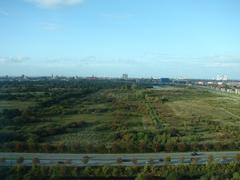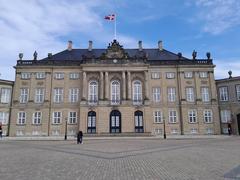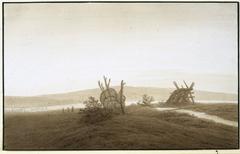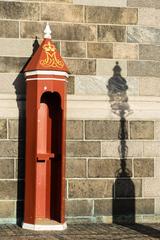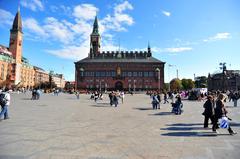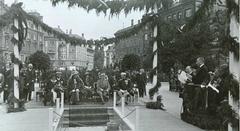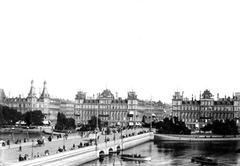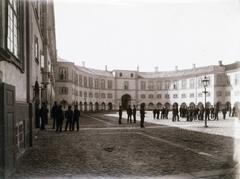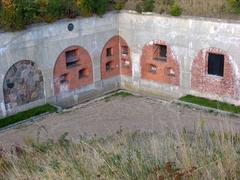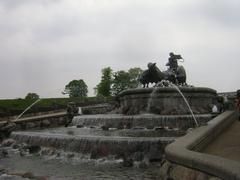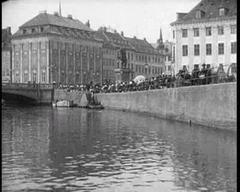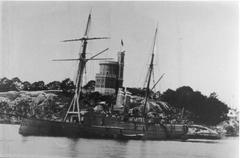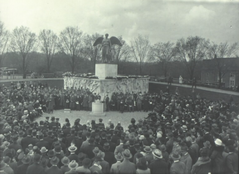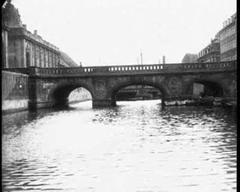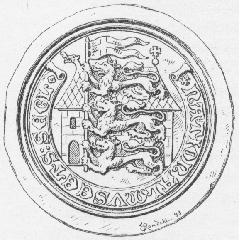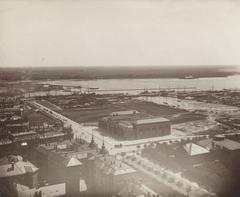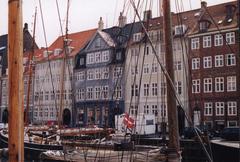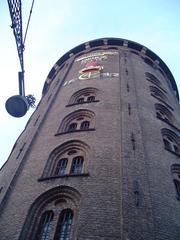Visiting Kvæsthusmolen: Hours, Tickets, and Attractions in Frederiksberg
Date: 18/07/2024
Introduction
Kvæsthusmolen, nestled within the heart of Copenhagen, Denmark, is a captivating district that offers a unique blend of historical charm and modern vibrance. This area, whose name translates to ‘wharf mole,’ has a rich maritime heritage that dates back to the 17th century when it first emerged as a vital harbor. Over the centuries, Kvæsthusmolen has evolved from a bustling hub of shipbuilding and trade into a dynamic cultural and residential district that attracts visitors from around the world. From being the site of the grand Royal Provision Warehouse in the 18th century to housing the Royal Danish Playhouse in the 21st century, Kvæsthusmolen’s history is a testament to Copenhagen’s adaptability and progressive spirit (Visit Copenhagen).
Today, Kvæsthusmolen is celebrated not only for its historical significance but also for its modern attractions and cultural offerings. Visitors can explore a variety of sites, including the striking Black Diamond, the Copenhagen Opera House, and the iconic Nyhavn waterfront. Each landmark provides a window into the area’s rich past and its ongoing transformation. Whether you’re captivated by the architectural splendor of the Royal Danish Playhouse or the charming streets of the Gammelholm neighborhood, Kvæsthusmolen promises a multifaceted experience that reflects the dynamic spirit of Copenhagen (KGL).
Table of Contents
- Exploring Kvæsthusmolen
- Cultural and Historical Significance
- Visitor Information
- Nearby Attractions
- Visitor Tips
- FAQ
Exploring Kvæsthusmolen
A Glimpse into Kvæsthusmolen’s Past
Kvæsthusmolen, a vibrant waterfront area in Copenhagen, boasts a rich history intertwined with the city’s maritime legacy. Once a bustling harbor teeming with commercial activity, it has transformed into a modern hub for culture, entertainment, and leisure.
Early Beginnings as a Harbor
The history of Kvæsthusmolen dates back to the 17th century. Its name, meaning “wharf mole,” reflects its original purpose as a vital part of Copenhagen’s harbor.
- 1617-1624: King Christian IV commissions the construction of a shipyard on the eastern shore of Slotsholmen, marking the beginning of the area’s development as a maritime center (Visit Copenhagen).
- 1680s: A boom in shipping and trade necessitates the expansion of Copenhagen’s harbor facilities, leading to the construction of a new wharf in the area now known as Kvæsthusmolen (Visit Copenhagen).
- 1728: A devastating fire rips through Copenhagen, destroying a significant portion of the city, including many buildings around the harbor. This disaster, while tragic, paves the way for reconstruction and a new chapter in Kvæsthusmolen’s history (Visit Copenhagen).
The Royal Provision Warehouse and Naval Dominance
The 18th century saw Kvæsthusmolen solidify its position as a center for maritime trade and naval power.
- 1767: The Royal Provision Warehouse (Provianthuset) is erected on Kvæsthusmolen. This grand building, designed by architect Georg Erdman Rosenberg, served as a storage facility for the Danish navy, housing supplies like grain, meat, and other provisions (Visit Copenhagen).
- Late 18th Century: Kvæsthusmolen thrives as a hub for shipbuilding and repair. The Danish navy utilizes the area for constructing and maintaining its fleet, contributing to the bustling atmosphere of the waterfront (Visit Copenhagen).
Transformation and Modernization in the 19th Century
The 19th century ushered in significant changes for Kvæsthusmolen, as Copenhagen adapted to the evolving demands of trade and industry.
- 1880s: The harbor at Kvæsthusmolen undergoes modernization to accommodate larger steamships, reflecting the technological advancements of the era (Visit Copenhagen).
- Late 19th Century: The Royal Provision Warehouse is decommissioned and repurposed as the home of the Royal Danish Academy of Fine Arts’ School of Architecture, signifying the area’s shift from industrial use to cultural and educational purposes (KGL).
Kvæsthusmolen Today - A Blend of Old and New
The 20th Century and Beyond - A Cultural Renaissance
The 20th century witnessed a dramatic shift in Kvæsthusmolen’s identity. No longer a bustling harbor, it transformed into a vibrant cultural and residential district.
- Mid-20th Century: As Copenhagen’s harbor activities relocate, Kvæsthusmolen undergoes a transformation, with new developments replacing warehouses and shipyards (Visit Copenhagen).
- Late 20th Century - Present: Kvæsthusmolen experiences a revival as a sought-after residential and cultural area, featuring modern apartments, offices, and cultural venues (Visit Copenhagen).
Visitor Information
Visiting Hours and Tickets
Kvæsthusmolen is accessible year-round, but specific venues such as the Royal Danish Playhouse have their own operating hours. It’s advisable to check the official websites for the most up-to-date information on visiting hours and ticket prices.
Travel Tips and Accessibility
Kvæsthusmolen is easily accessible by public transportation, bike, or on foot. The area is well-connected by bus and metro lines. For those with mobility issues, most of the area is wheelchair accessible.
Nearby Attractions
Exploring Kvæsthusmolen offers more than just its own historical and cultural insights. Visitors can also explore nearby attractions such as Nyhavn, the Danish Architecture Center (DAC), and the Amalienborg Palace.
- The Black Diamond (Den Sorte Diamant): An architectural marvel housing the Royal Danish Library (The Black Diamond).
- Copenhagen Opera House (Operaen): A modern masterpiece and cultural icon (Copenhagen Opera House).
- Nyhavn: A vibrant 17th-century waterfront canal, perfect for a leisurely stroll.
- Amalienborg Palace: The official residence of the Danish royal family (Amalienborg Palace).
- The Little Mermaid Statue: A must-see iconic bronze sculpture inspired by Hans Christian Andersen’s fairy tale.
- Christianshavn: A charming neighborhood known for its picturesque canals and relaxed atmosphere.
- National Museum of Denmark (Nationalmuseet): Offers a deep dive into Denmark’s rich history (National Museum of Denmark).
- Rosenborg Castle: A Renaissance masterpiece housing the Danish crown jewels (Rosenborg Castle).
Visitor Tips
- Copenhagen Card: Consider purchasing a Copenhagen Card for free admission to many attractions and unlimited public transportation.
- Walking and Cycling: Kvæsthusmolen is centrally located, making it easy to explore many attractions on foot or by bike.
- Harbor Tours: A harbor tour is a great way to see the city from a different perspective and learn about its maritime history.
- Pack for All Weather: Copenhagen’s weather can be unpredictable, so pack layers and be prepared for rain or shine.
- Learn Some Danish: While most people in Copenhagen speak English, learning a few basic Danish phrases will enhance your experience.
FAQ
- What are the visiting hours for Kvæsthusmolen? Kvæsthusmolen is accessible year-round, but specific venues such as the Royal Danish Playhouse have their own operating hours.
- How much are the tickets for the Royal Danish Playhouse? Ticket prices vary depending on the performance. Check the Playhouse’s official website for the most current information.
- What are some nearby attractions to visit? Nearby attractions include Nyhavn, the Danish Architecture Center (DAC), and the Amalienborg Palace.
Conclusion
Kvæsthusmolen stands as a remarkable example of Copenhagen’s ability to seamlessly blend its historical roots with contemporary innovation. This district’s journey from a 17th-century harbor to a modern cultural hub illustrates the city’s resilience and forward-thinking approach. Today, Kvæsthusmolen offers visitors an array of attractions, from the iconic Royal Danish Playhouse to the picturesque Nyhavn, each contributing to the area’s vibrant atmosphere and cultural richness. As you stroll through Kvæsthusmolen, you are not only walking through a significant part of Copenhagen’s maritime history but also experiencing its ongoing renaissance as a center of arts, culture, and leisure. Whether you’re a history aficionado, an architecture enthusiast, or simply looking to soak in the local culture, Kvæsthusmolen provides a captivating destination that beautifully encapsulates the essence of Copenhagen (Visit Copenhagen, KGL).
References
- Visit Copenhagen, 2023, Visit Copenhagen
- KGL, 2023, Royal Danish Theater
